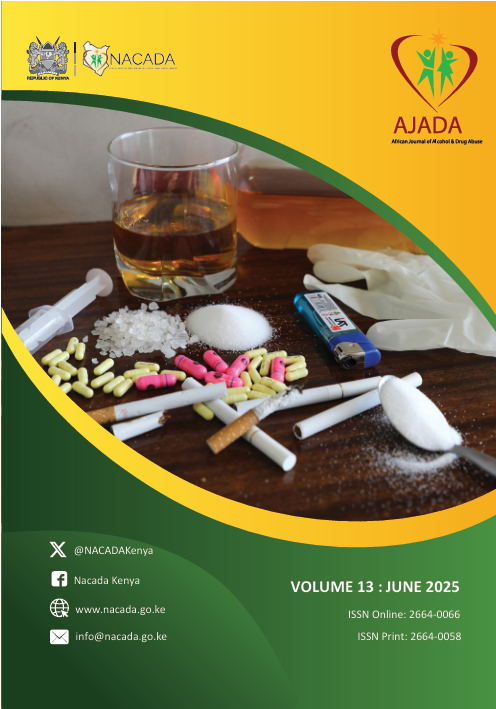Gendered pathways and responsive interventions to curb substance use among Women
Abstract
While substance use has historically been more prevalent among men, recent data indicate an upward trend in drug use among women. This brief explores the unique factors influencing women’s substance use, including sociocultural pressures, gender targeted marketing, and the influence of intimate partners. It also highlights systemic gaps in treatment, such as the lack of gender responsive services. It calls for urgent, individualized, and trauma-responsive approaches to prevention and rehabilitation tailored to women’s distinct needs. Globally, substance use has traditionally exhibited higher prevalence among men. However, the gender gap is narrowing, with a notable increase in substance use among women over the past few decades (United Nations Office on Drugs and Crime [UNODC], 2024). In Kenya, recent data from the Status of Drugs and Substance Use among University Students (NACADA, 2024) indicate that 23.9% of female students reported drug use, compared to 28.8% of male students—a margin of just 5%. These figures reveal an urgent need to re-examine gender dynamics in substance use prevention and treatment
Downloads
Published
Issue
Section
License
Copyright (c) 2025 Caroline Kahiu

This work is licensed under a Creative Commons Attribution-NonCommercial-ShareAlike 4.0 International License.


